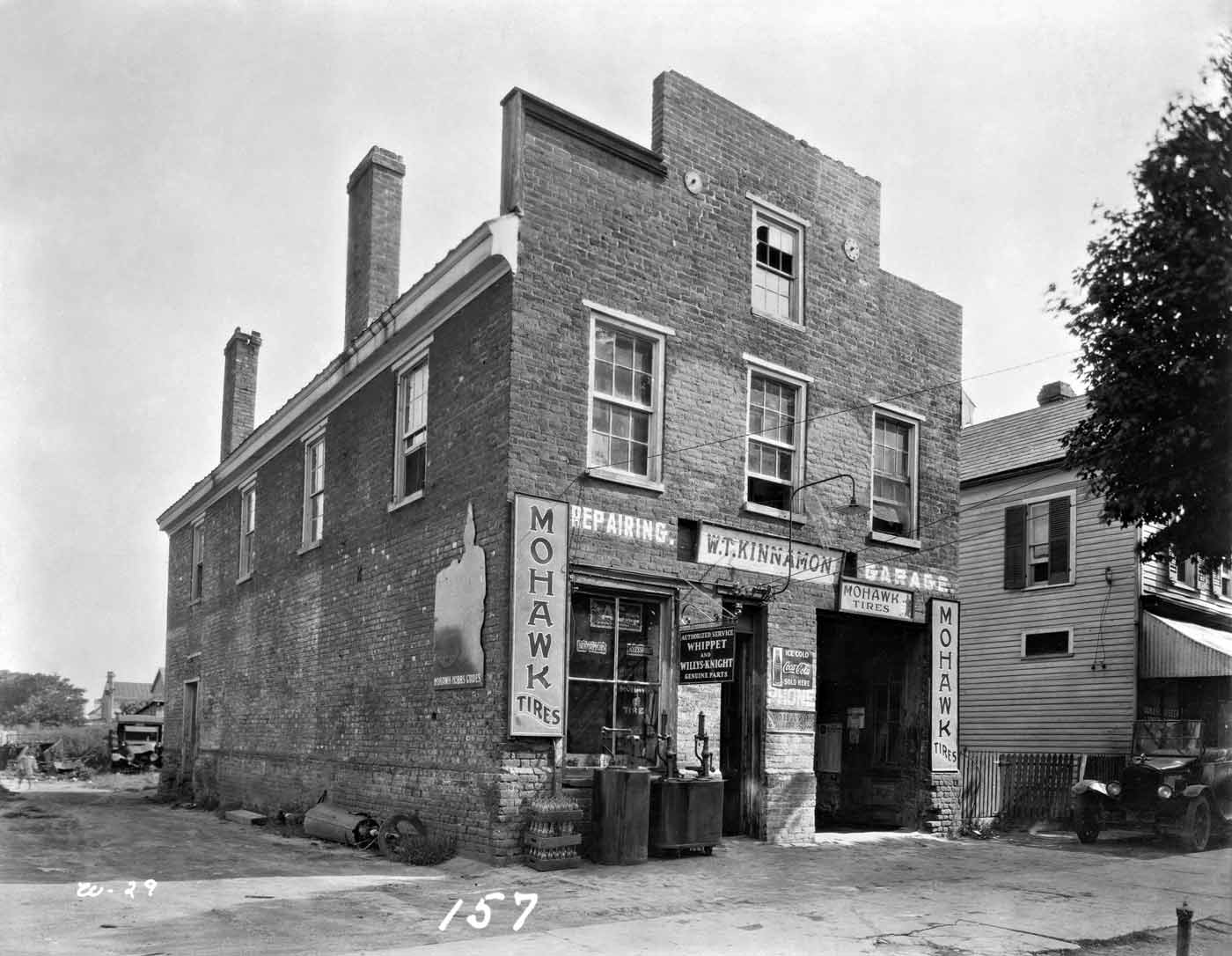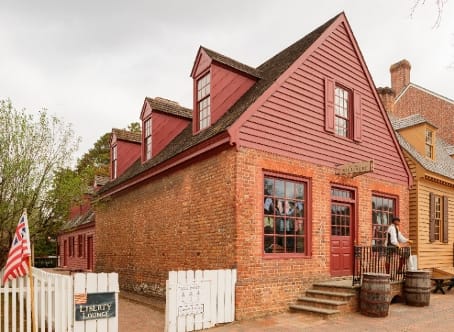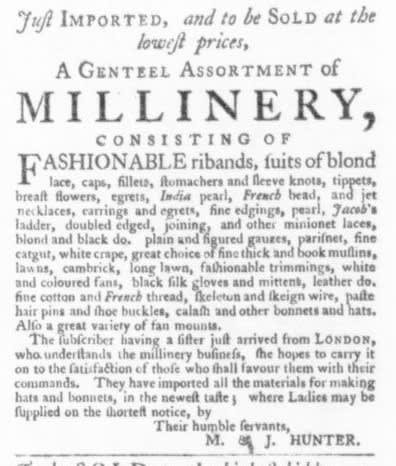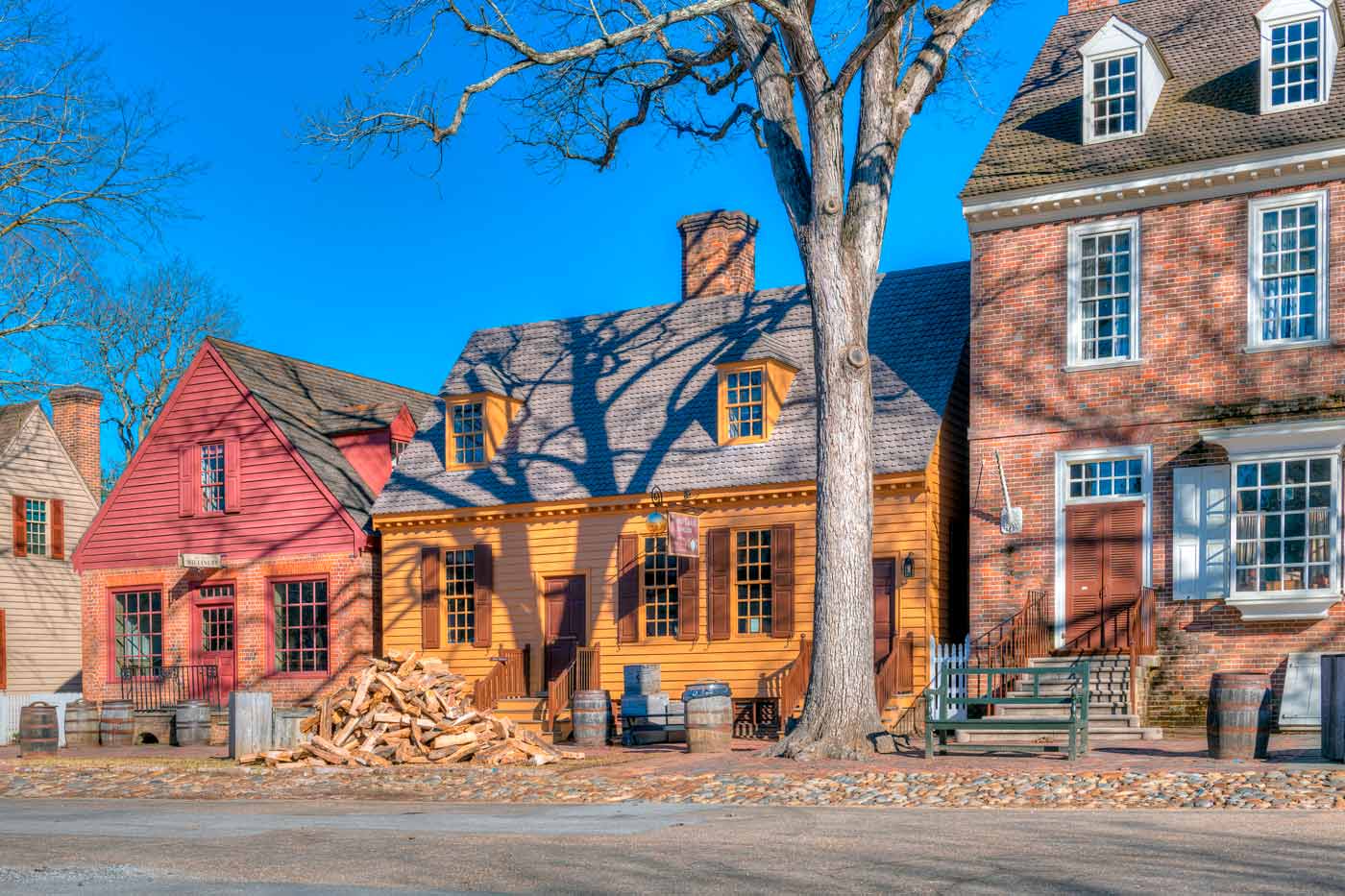Have you ever wondered how Colonial Williamsburg interpreters know what we know? How do we know, for example, what furniture to put in the Governor’s Palace? How do we know how much it cost to buy a meal in a tavern? How do we know that Peyton Randolph owned 27 enslaved people? How do we put together the stories of the lives that we remember and recount daily at Colonial Williamsburg?
When it comes to women and enslaved people, documentation is particularly scarce, meaning that we must work all the harder to uncover the scattered fragments of evidence that are left behind. We in the Margaret Hunter Millinery Shop are particularly lucky in that not only do we interpret and perpetuate one of the few trades that was dominated by women in the 18th century, but we’re privileged to do so in an original building that once was owned outright by a single businesswoman. But how do we really know it was actually owned by Margaret Hunter?


Last April, when our shop was temporarily closed for conservation and maintenance, we millinery apprentices ensconced ourselves in Colonial Williamsburg’s John D. Rockefeller Jr. Library to do a little sleuthing in the archives to see how much more we could uncover about Margaret Hunter and the business by which she supported herself. Much of the research we have been interpreting in the shop was originally done in the 1940s and early 1950s, when scholarly protocols and methodologies were quite different. It was time to pay the records a second visit and renew our familiarity with the primary source materials.
Newspapers are one of the first ports-of-call when looking to research an individual living and/or working in 18th-century Williamsburg. The Rockefeller Library’s large collection of digitized editions of the Virginia Gazettes is available online, indexed to facilitate browsing for a topic or person. It is here that we encounter the first known reference to Margaret Hunter, in an advertisement for a millinery shop she is running with her sister, Jane. From this we learn that Margaret is newly arrived from London in the fall of 1767, and that she “understands” the millinery business, most likely meaning that she had completed a formal apprenticeship in the trade.

The location of the shop isn’t clear, but we know the sisters continued working side-by-side until Jane went to England temporarily in late 1769, leaving Margaret in charge. No further mention of either of the Hunter ladies appears in the papers until Margaret suddenly begins to advertise alone in May 1771, signaling a division of their business assets. This apparent rift seems rather puzzling at first, and there are a number of possible explanations for it. Did Jane die? Did she leave the city? Had there been a disagreement between the sisters? Luckily for us, the Virginia Gazette offers the answer in the form of another advertisement on October 24th of the same year. Here, we find a Jane Charlton offering her services as a milliner, leading us to conclude that it was a marriage that caused the sisters to dissolve their partnership. Because a woman’s property – both personal and business – legally defaulted to her husband upon marriage, we assume that the decision was made to allow Margaret to retain legal ownership of her half of the business’s assets.

Margaret’s first solo advertisement reveals that she has relocated to a building “next Door to Mr. Robert Anderson’s Tavern” (now interpreted as Wetherburn’s Tavern). This situation doesn’t last long, as a month later, she’s leasing “the Corner Store in Doctor Carter’s Brick House” (on the east side of the present-day Golden Ball). It is not until February 5, 1780 that we find “her store opposite to Mr. Ambrose Davenport’s tavern” (Robert Anderson’s tavern had changed hands in the intervening years). No further mention of her location appears in any subsequent advertisement, however, so how do we know when — or even if — she came to own the specific building we now call “the Margaret Hunter Shop,” on the west side of the Golden Ball?

While newspapers are always an efficient place to start when researching a historical personage, they often aren’t the only primary resource we have available, especially when it comes to tracking individuals known to have owned property. When Richmond burned during the Civil War, nearly all of Virginia’s county records were lost. Fortunately for us, however, Williamsburg straddles two counties, one of which – York County – neglected to send its records to the Confederate capital for “safe keeping.” The York County Project has indexed the court records, tax documents, wills, inventories, and deeds that survive to form this invaluable archive, and it is here that we find the definitive answer to the question of the shop’s ultimate location.
A deed for the land on which the present-day millinery shop sits does not survive in the county records, but one for the neighboring lot to the west does. We discovered that the two properties had once been a single lot which had been subdivided several times prior to Margaret Hunter’s purchase of her quarter lot portion of the land. When William Russell purchased the dwelling to the west of the brick shop on November 15, 1774, the property lines were thus clearly delineated: his land was “bounded…on the East by the Lots or parts of lots of James Craig and Margaret Hunter.” Sometime between June 1771 and November 1774, Margaret had purchased the brick building and the land on which it sits, now known as the Margaret Hunter Shop.
Margaret remained in possession of the property and continued to operate a shop on site until well after the Revolution. Two issues of the Virginia Gazette alert us to her death on the September 18, 1787: the first simply announces her passing “after a few days illness,” while a second follow-up notice a week later advertises for sale “the property of the late Mrs. Hunter.” This sale, advertised by sister Jane’s husband, Edward Charlton, who was administrator of the will, included “THE BRICK HOUSE…situated in the most public part of the city, well calculated for a store or dwelling house, in very good repair, it has a flush cellar, laid with flag stones, and a very convenient kitchen.” The county records indicate that the property failed to sell, however; one final document reveals that Margaret’s land was instead inherited by Jane and the third Hunter sister, Elizabeth Farrow, who still lived in London. On July 14, 1795, Elizabeth sent a formal agreement “to sell to her sister Jane Charlton her half interest in a certain brick dwelling house and premises situate and being in the Main Street of the city of Williamsburg, formerly the property of her late sister Margaret Hunter, spinster, deceased, Jane Charlton and Elizabeth Farrow being joint heirs of Margaret Hunter.”
Jane continued to operate as a milliner until her death in 1802. We assume that she did so out of the shop she inherited from her sister, continuing a line of savvy businesswomen determined to support themselves in a male-dominated economic system. This is the legacy that we try to preserve and to share daily, as modern-day milliners continuing the practice of a traditionally feminine trade in a shop that did the same 250 years ago.
We would like to say thank you again to the incomparable staff at the John D. Rockefeller Jr. Library, who always go above and beyond to assist us in our research quests. Their enthusiasm, curiosity, dedication, and knowledge make them invaluable partners in uncovering and sharing the history that Colonial Williamsburg seeks to preserve.
Apprentice milliner and mantua-maker Rebecca Starkins joined the Colonial Williamsburg Foundation in 2016. Her research interests include puzzling out the intricacies of outerwear styles and examining representations of working women in 18th- and 19th-century literature by female writers.
Resources
Virginia Gazette (Purdie and Dixon), 20 June 1771.
York County Records, Deeds, Book VIII, p. 461.
Virginia Gazette (Nicolson), 4 October 1787.
Ibid., 11 October 1787.
York County Records, Deeds, Book VII, p. 171.
